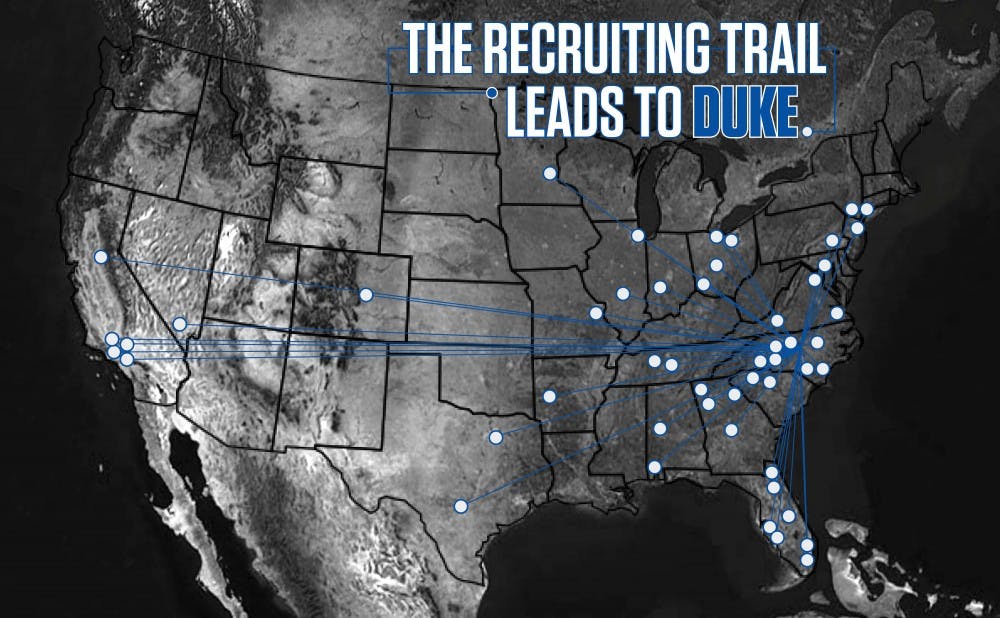The Blue Devils spent Christmas in the Big Apple, but the present they were looking for will have to be earned on the field Saturday—a bowl victory.
After falling just short in each of the past three seasons, Duke will get another crack at its first bowl win in 54 years against Indiana at Yankee Stadium Dec. 26. Last year, the six-year-old ballpark hosted an exciting battle between two Northeastern teams—a 31-30 overtime victory for Penn State against Boston College. This year, the postseason trip to the Bronx will be a first for both programs—neither the Blue Devils nor the Hoosiers have played any of their 20 combined bowl games in the Northeast.
Duke did have success in the Empire State earlier this year with a 44-3 trouncing of Army at West Point in October. On the other sideline, Indiana has played a pair of games in climates similar to a chilly New York winter, but didn’t fare so well in either one, suffering losses at Penn State and Michigan State by a combined 48 points.
Saturday’s tilt will truly be a neutral-site game for both sides—the Blue Devils have to travel “only” 504 miles from campus to Yankee Stadium, compared to 768 for the Hoosiers. But can we expect either squad to have any sort of home-field advantage in the crowd?
Duke has a reputation of hoarding students from the tri-state area—Connecticut, New Jersey and New York—which could come in handy in filling a stadium that can seat 50,000, as the Blue Devils sold out their ticket allotment with a few days to spare.
With 591 current undergraduates, New York actually checks in as the third-most represented state at Duke, behind only local North Carolina and the country’s most populous state, California. Throw in Connecticut and New Jersey, and there are 1,138 Blue Devils—roughly one-sixth of the undergraduate population—in the surrounding area that could potentially cheer on their team against the Hoosiers.
However, thanks to the fact that it has more than six times as many students as Duke, Indiana may still be in the lead when it comes to fans who can make the trek the day after Christmas. The university’s admissions site lists 4,716 undergraduates as hailing from the “East”—a vague classification, but nonetheless one that indicates a significant contingent of Hoosiers could be on hand Saturday.
What about on the field? Unsurprisingly, neither team’s roster is loaded with players from the Northeast. Of the 51 combined starters or key players for Duke and Indiana, just one hails from the region—Blue Devil defensive tackle A.J. Wolf, a Greenwich, Conn., native who played high school football in New York.
Instead, most of the key players in Saturday’s game are either local recruits, or talents from national football hotbeds. Nine of Indiana’s starters were born and raised in the Hoosier State—with four more coming from neighboring Ohio—and six of Duke head coach David Cutcliffe’s starting 22 are native North Carolinians. Florida and Georgia—two states known for producing large quantities of collegiate-caliber athletes in a variety of sports—account for a combined 13 members of the team’s rotations.
The only crossover? Senior walk-on Hud Mellencamp, who will suit up in a Duke uniform Saturday despite being from Bloomington, Ind., where Indiana’s campus is located.
Overall, North Carolina is the most-represented state for the Blue Devils, with 23 players who are natives of the Tar Heel State. That figure makes up 21.9 percent of Duke’s total roster—a marked increase from North Carolina’s 13.3 percent composition of the general student body in Durham.
Florida and Georgia tied in producing the second-most Duke players, accounting for 16 apiece, or 15.2 percent of the total roster. Again, these numbers look pretty out of whack compared to each state’s respective proportion of undergraduates—which is 7.6 for Florida and 3.4 for Georgia.
California was the only other state that double-digit Blue Devils can call home. Ten Duke players hail from the Golden State, good for 9.5 percent of the roster—a figure right in line with the 641 undergraduates that make up 9.7 percent of the student population.
Get The Chronicle straight to your inbox
Signup for our weekly newsletter. Cancel at any time.

